Surviving gentrification
Co-ops are the next step for the Exchange District
The Albert Street Autonomous Zone (A-Zone) located at 91 Albert St.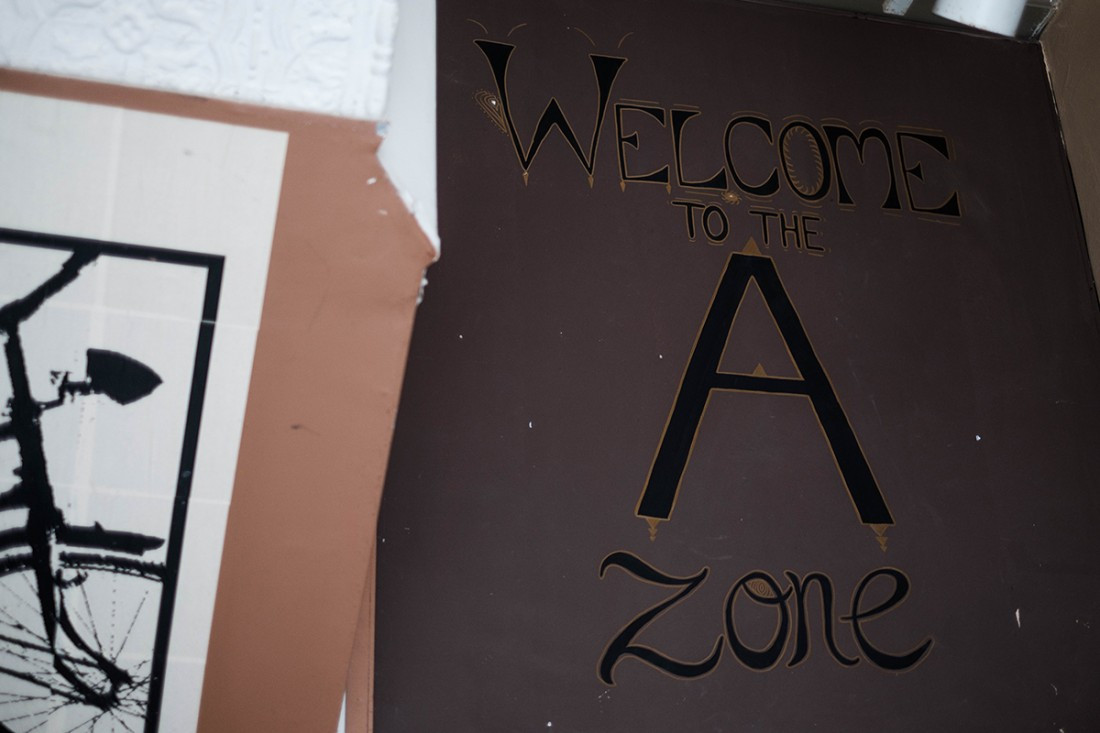
Jino Distasio, director of the Institute of Urban Studies at the University of Winnipeg, explains that the city is experiencing a surge that hasn’t occurred in a hundred years.
“For a long period of time, our planners, our politicians were planning for slow, very modest, almost negative growth … now, we’re seeing in-flows of international folks in the range of 10 to 15 thousand,” he explains.
“We’re trying to figure out as a community how we manage growth,” he says.
The Exchange is no stranger to structural changes.
Kristen Andrews, owner of Ragpickers, explains that warehouses were built at the turn of the century to accommodate manufacturing companies. Following the implementation of NAFTA in 1994, products and labours were sourced from overseas, and the empty warehouses became available for low prices.
“All of a sudden, you have these manufacturing spaces. The third building that Ragpickers was in had 40,000-square-foot open spaces in it,” she says.
The people that were willing to use these spaces were artists, as well as the owners of art galleries and second-hand shops.
“The relationship between alternative-type people and entrepreneurs to the Exchange District is a long one,” Andrews says.
Exchanging identities
Artwork and posters decorating the walls in the A-Zone.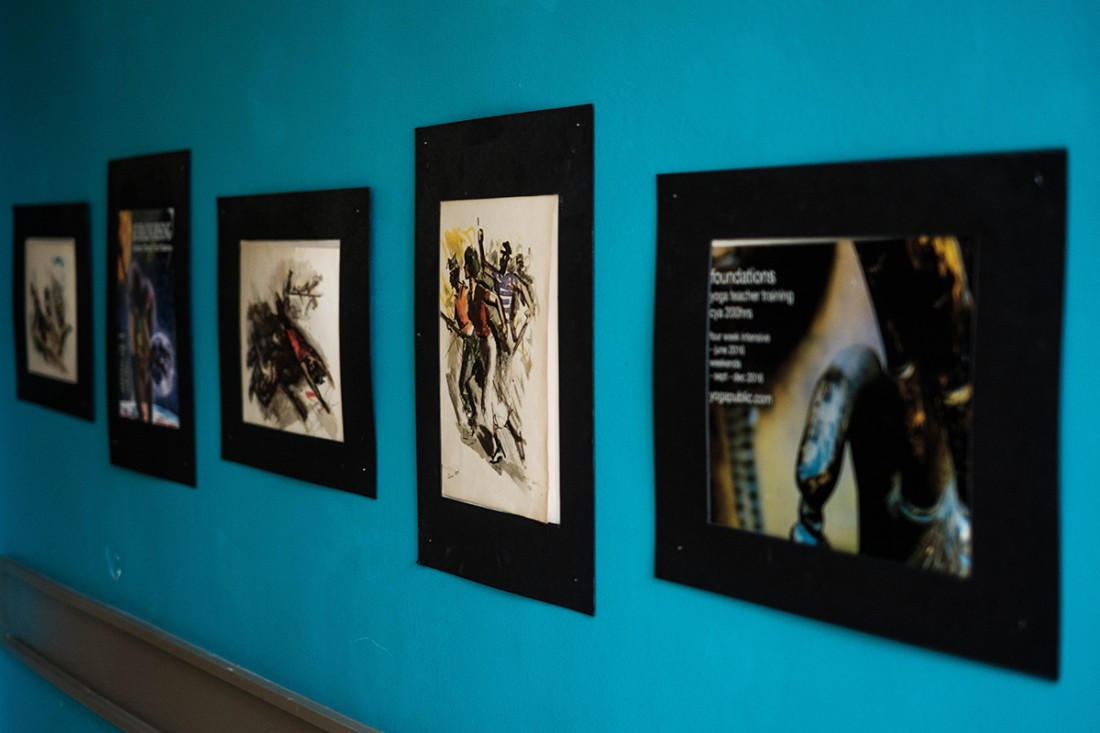
It’s “getting the feeling of more of a neighbourhood, so we’re getting all kinds of neighbourhood-level stores and shops that are emerging,” he explains.
While there aren’t yet many grocery stores, Distasio highlights the presence of ethnic-food stores, which cater to the international population. Many commercial activities come and go, he says, but there is a larger diversity than ever in terms of amenities, supports, and services to the area.
Throughout the ’80s and ’90s, the Exchange bloomed as an entertainment district.
“The real reason of being in the Exchange was for the ballet, the symphony or a couple of the nightclubs,” Distasio says.
Three major demographics are helping drive changes in businesses and housing: younger folks looking for the experience of downtown-living, international folks localizing in the downtown and older folks that are retiring or downsizing, seeking the higher-end experience of downtown living.
Andrews chalks this up to the product of gentrification. Gentrification occurs when an impoverished area becomes desirable to the higher class, making the value of the land go up. The result is often that the lower class previously inhabiting the space can no longer afford to live there.
Since the Exchange has become a more attractive place to live, the demand for space has skyrocketed, leading to rising rental prices. This means that a demographic with a lower income is being pushed out of the area, but Distasio maintains that people are not being intentionally displaced. Rather, the market is inadvertently restricting who has the means to be there.
“It’s a question of affordability,” he con-cludes. Andrews agrees from her stand-
point in the arts community.
“In the end, it is all profit-driven,” she says.
Artists “create a neighbourhood out of empty manufacturing space and make it desirable,” Andrews says. “All it takes is for the first larger-backed company to step in and do some renovations, and landowners start to reevaluate their spaces.”
A collective approach
Entrance to the Dragon Arts Collective.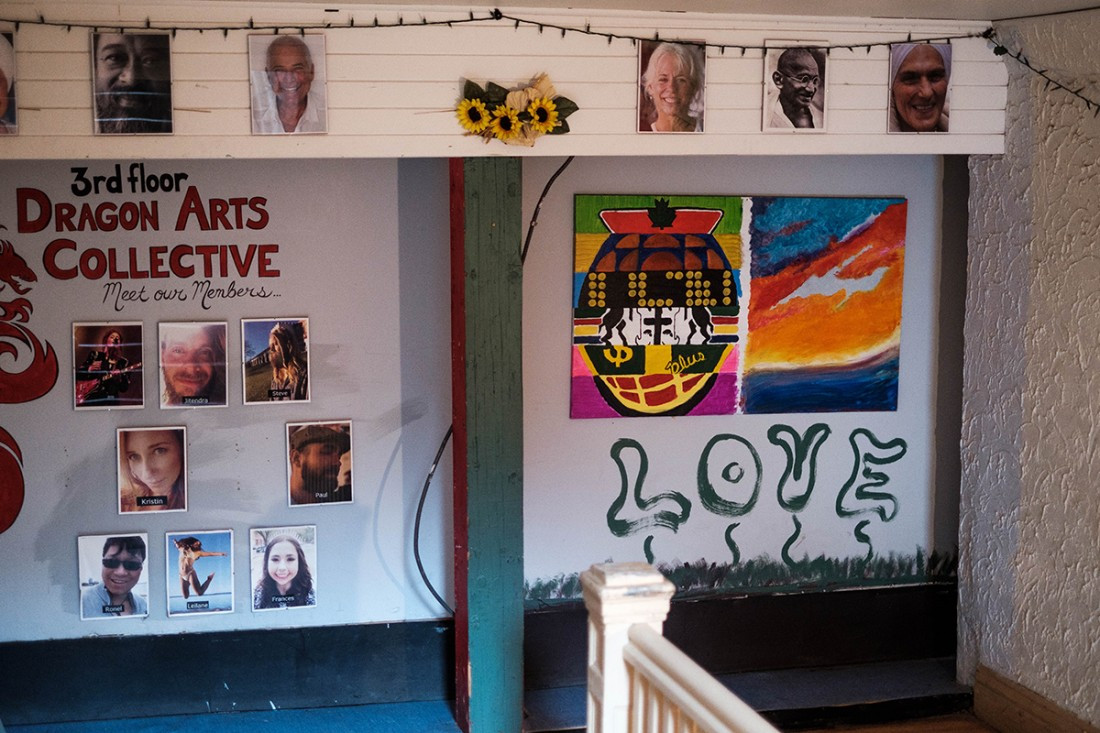
“In that building, we’re like a family,” Jitendra says.
The A-Zone is owned and operated by tenants of 91 Albert St., who rent out studios to businesses such as the DAC.
When choosing how to rent out the space, the A-Zone can focus more on building community than on profitability. Jitendra rents out one of the rooms to a band he knows as practice space.
“That way, I have more control over what’s going on the top floor, rather than having some random people that I have no relationship with,” he says. He explains that ultimately, it’s an exchange of trust and goodwill toward one another.
Ironically, the co-operative model mimics the neighbourhood effect that city planners are trying to create via condo-building.
Members of the collective work together to maintain their shared space and resources. For instance, unlike at other studios, Jitendra was allowed to paint and decorate the space and stairwell to his liking. He believes that people have the right to work in an environment where they feel at home.
“We have such an incredible vibe in the building,” he says.
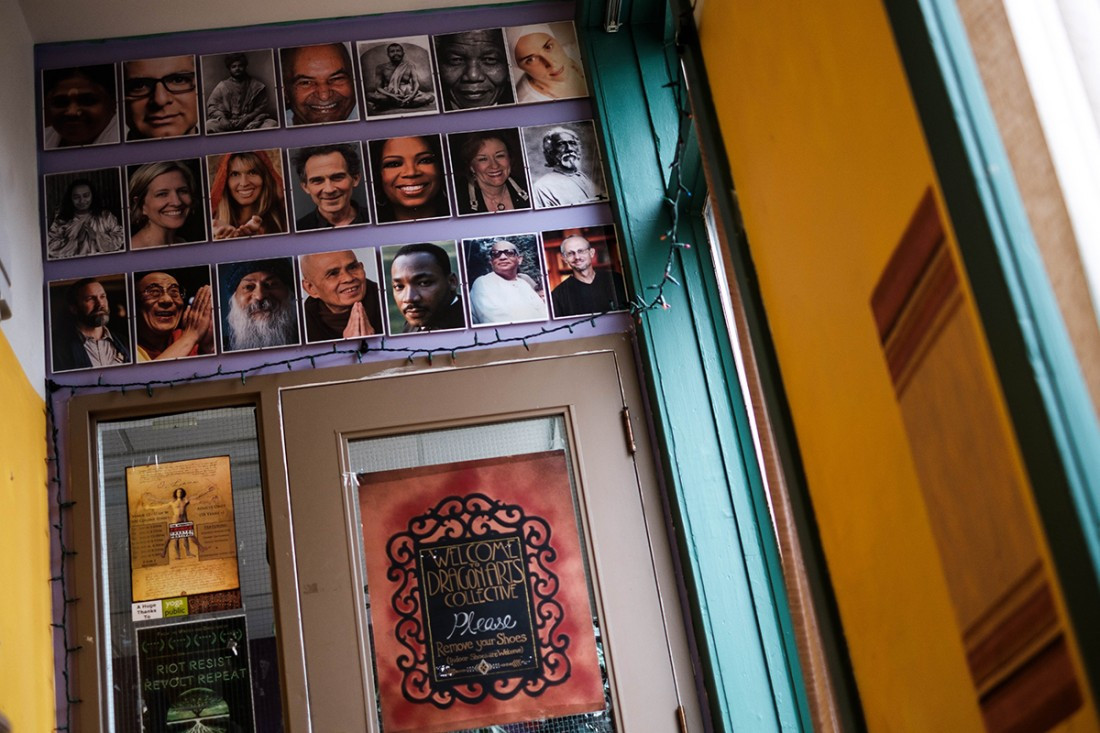
Dragon Arts Collective is one of several collectives and business that share space at 91 Albert St.
Putting money where values are
Andrews suggests that in order to counter gentrification, artists should come together and make a collective effort toward keeping their spaces. They need to share their buying capacity, and this can be done as well by sharing spaces and hosting group events.
Jitendra explains that the collective functions on an economy of equality, where they ascertain that every member has a voice.
We make “choices that are really spiritually inclined to honour the spirit of what it means to co-operate with not only our planet, but each other, and to not have it become a capitalistic system, but a system of fairness and equality,” he says.
While initially donation-based, the studio recently started charging a minimum $10 fee per class. This change is due in part to the cost of their online software system but is also the result of a rent increase.
“It also reflects the fact that we’re working towards more classes on our schedule and thus have less time available to rent out the studios to other people,” Jitendra says.
Since the building is owned by the tenants, the rent is only increased when necessary to sustain the shared cost of the space and equipment, rather than when it would benefit the landlord, he says.
In a 2012 press release following the purchase of the building, board member Mark Jenkins explains that this new ownership is the reason the A-Zone has survived despite rising rent costs.
“Some of our tenants can only afford sub-market rents. Others would not be tolerated by capitalist ownership for their political views,” Jenkins says in the release. “It takes a bias when filling vacancies to maintain a political character in a commercial building.”
In order to purchase the building, members of the A-Zone collective pooled together their finances and fundraised the rest. They had all tenants agree to a higher rental price before making the buy.
Jitendra explains that the spirit of the building is not focused on profit, but rather on growing creatively and spiritually. Members engage in non-hierarchal decision-making and deal with any issues by having a discussion to figure out what can be done.
Growing the future
Cheaper rental rates in the Exchange have historically attracted artists to the area.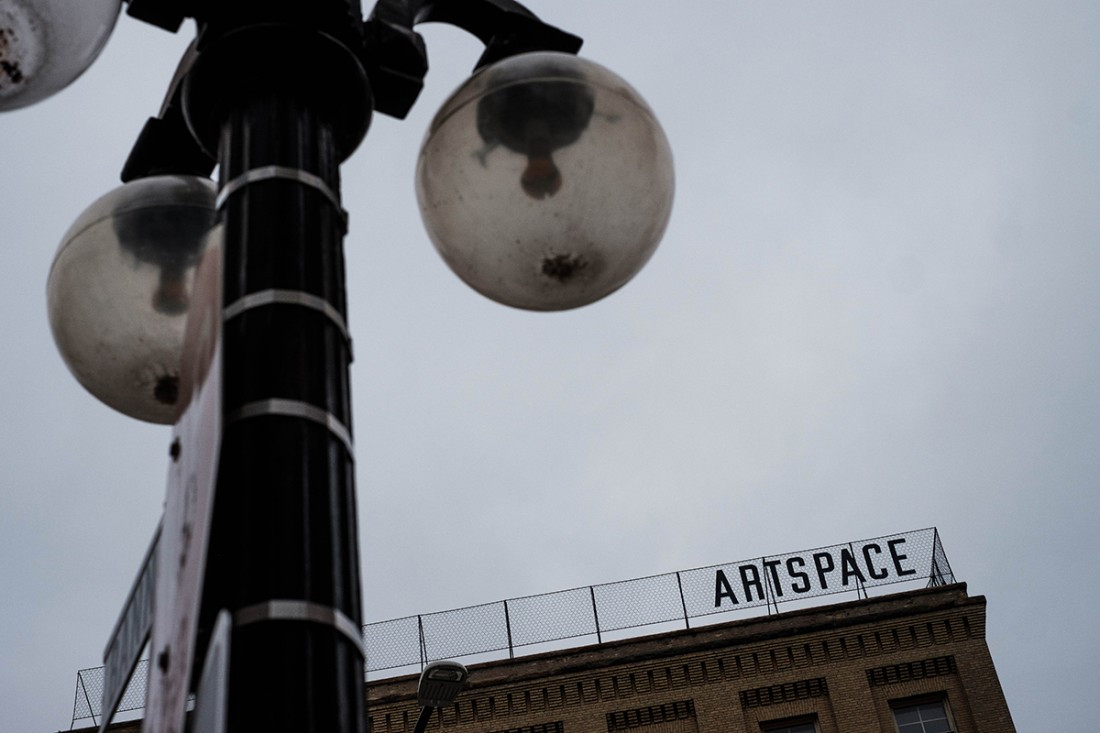
“We’re going to at some point see a tremendous amount of conflict … as the Exchange pushes into the north main area,” he says. He explains that this area has more visible signs of poverty, with shelters and transitional housing, and is ill-equipped to cope with rent hikes.
“There are so many less problems in a culture when everybody has a key to a door,” Jitendra says. He suggests making changes at a local level to influence the larger social structures, such as being part of a collective endeavour.
As a potential solution, Distasio would like to see more forms of co-operative housing, not only businesses.
“That’s going to come down to different community-based organization, community groups,” he says. “What can we do to create more opportunities for more people that want to choose to live in a rich, diverse downtown setting?”
Published in Volume 72, Number 7 of The Uniter (October 26, 2017)







